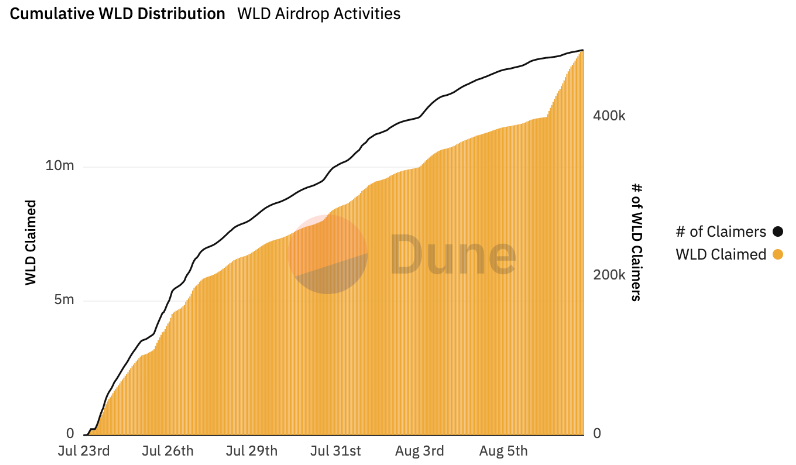Worldcoin (WLD), considered one of the most remarkable projects in the cryptocurrency sector, continues to achieve significant growth despite all criticisms. It is observed that over 16 million WLD have been distributed in the project, scanning the retinas of millions of people.
Increase in Worldcoin Distribution
Looking at the data shared by the analysis platform Dune, it is seen that the number of wallet addresses scanning their retinas to earn WLD exceeds 520,000. This indicates that each person has earned an average of $56. This calculation has been made based on the current market price.
Looking at the data shared by Dune, it can be said that the increase has recently been significant. When looking at Worldcoin’s token model, it is also seen that 1.25% of the total circulation of 10 billion tokens is in circulation. This corresponds to a market value of $225 million.

Analysts emphasize that the future is uncertain for WLD, which has a very low amount in circulation, and it is challenging to make accurate predictions before a large part of the circulation is released into the market. While some see the limited availability of WLD in the market as an advantage, others see it as a disadvantage.
WLD Receives Criticism
In mid-July 2024, an additional 6.62 million WLD will enter circulation, and the distribution of WLD will be different from those obtained through airdrops. Developed by OpenAI CEO Sam Altman, Worldcoin aims to scan the retinas of everyone in the world and provide them with a unique identity. Worldcoin token is seen as a reward given to those who scan their retinas. Those who scan their retinas gain access to a special identity called World ID and can perform verifications in various places without personal information such as name or surname. This can be said to be the fundamental philosophy of Worldcoin.
Of course, this philosophy has received criticism from many people, and retinal scanning, seen in the category of biometric data, has been considered too valuable to be given by many. However, WLD continues its distributions and verifications at full speed.

 Türkçe
Türkçe Español
Español










